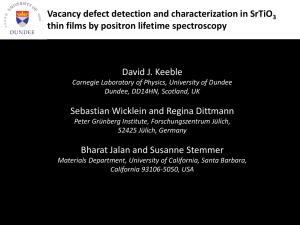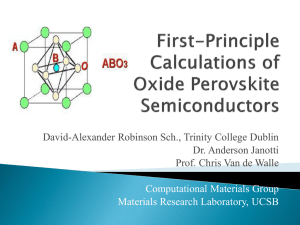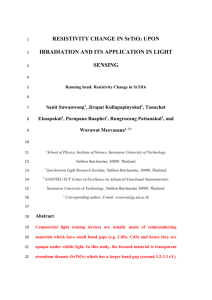Xu LIU - The 3rd Super-PIRE REIMEI Workshop on Frontiers of
advertisement
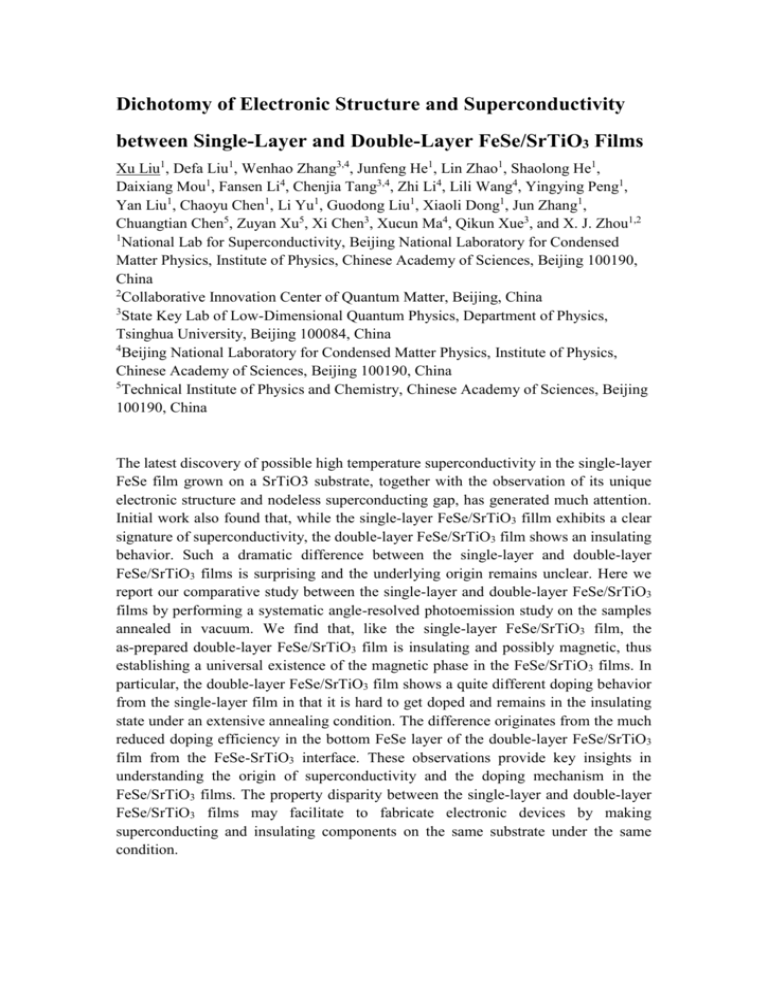
Dichotomy of Electronic Structure and Superconductivity between Single-Layer and Double-Layer FeSe/SrTiO3 Films Xu Liu1, Defa Liu1, Wenhao Zhang3,4, Junfeng He1, Lin Zhao1, Shaolong He1, Daixiang Mou1, Fansen Li4, Chenjia Tang3,4, Zhi Li4, Lili Wang4, Yingying Peng1, Yan Liu1, Chaoyu Chen1, Li Yu1, Guodong Liu1, Xiaoli Dong1, Jun Zhang1, Chuangtian Chen5, Zuyan Xu5, Xi Chen3, Xucun Ma4, Qikun Xue3, and X. J. Zhou1,2 1 National Lab for Superconductivity, Beijing National Laboratory for Condensed Matter Physics, Institute of Physics, Chinese Academy of Sciences, Beijing 100190, China 2 Collaborative Innovation Center of Quantum Matter, Beijing, China 3 State Key Lab of Low-Dimensional Quantum Physics, Department of Physics, Tsinghua University, Beijing 100084, China 4 Beijing National Laboratory for Condensed Matter Physics, Institute of Physics, Chinese Academy of Sciences, Beijing 100190, China 5 Technical Institute of Physics and Chemistry, Chinese Academy of Sciences, Beijing 100190, China The latest discovery of possible high temperature superconductivity in the single-layer FeSe film grown on a SrTiO3 substrate, together with the observation of its unique electronic structure and nodeless superconducting gap, has generated much attention. Initial work also found that, while the single-layer FeSe/SrTiO3 fillm exhibits a clear signature of superconductivity, the double-layer FeSe/SrTiO3 film shows an insulating behavior. Such a dramatic difference between the single-layer and double-layer FeSe/SrTiO3 films is surprising and the underlying origin remains unclear. Here we report our comparative study between the single-layer and double-layer FeSe/SrTiO3 films by performing a systematic angle-resolved photoemission study on the samples annealed in vacuum. We find that, like the single-layer FeSe/SrTiO3 film, the as-prepared double-layer FeSe/SrTiO3 film is insulating and possibly magnetic, thus establishing a universal existence of the magnetic phase in the FeSe/SrTiO3 films. In particular, the double-layer FeSe/SrTiO3 film shows a quite different doping behavior from the single-layer film in that it is hard to get doped and remains in the insulating state under an extensive annealing condition. The difference originates from the much reduced doping efficiency in the bottom FeSe layer of the double-layer FeSe/SrTiO3 film from the FeSe-SrTiO3 interface. These observations provide key insights in understanding the origin of superconductivity and the doping mechanism in the FeSe/SrTiO3 films. The property disparity between the single-layer and double-layer FeSe/SrTiO3 films may facilitate to fabricate electronic devices by making superconducting and insulating components on the same substrate under the same condition.
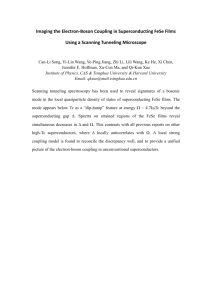
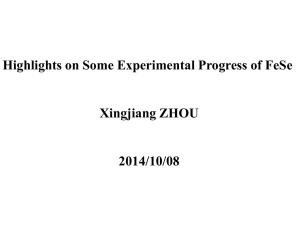
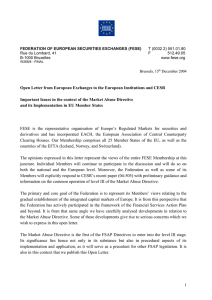
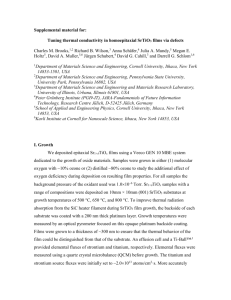
![Revealing the Empty-State Electronic Structure of Single- Unit-Cell FeSe/SrTiO[subscript 3] Please share](http://s2.studylib.net/store/data/012434729_1-ca819a03a66380a892211db4dc16b0f4-300x300.png)
![Bounds on nanoscale nematicity in single-layer FeSe/SrTiO[subscript 3] Please share](http://s2.studylib.net/store/data/011678630_1-828c9bfa9fa08ba62bac5c88dcdf2f7a-300x300.png)
